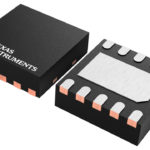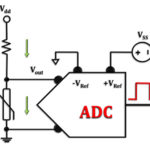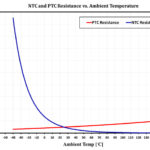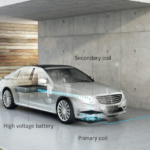Texas Instruments introduced the industry’s first DC/DC buck-boost converter to combine programmable input current limit and integrated dynamic voltage scaling to extend battery life by at least 50%. The TPS63900 maintains the industry’s lowest quiescent current (IQ), 75 nA, with 92% efficiency at 10 µA and delivers up to three times more output current than […]
texasinstrumentsinc
Hall-effect current sensors first with zero drift
Texas Instruments introduced the industry’s first zero-drift Hall-effect current sensors. The TMCS1100 and TMCS1101 enable the lowest drift and highest accuracy over time and temperature while providing reliable 3-kVrms isolation, which is especially important for AC or DC high-voltage systems such as industrial motor drives, solar inverters, energy-storage equipment and power supplies. Ongoing demand for higher […]
Buck-boost charger ICs for USB Type-C and USB Power Delivery ports hit 97% charging efficiency
Texas Instruments introduced the industry’s smallest buck-boost battery charger integrated circuits, which integrate power-path management for maximum power density and universal and fast charging at up to 97% efficiency. The BQ25790 and BQ25792 support efficient charging and 10 times lower quiescent current through USB Type-C and USB Power Delivery (PD) ports in small personal electronics, […]
DC-dc converter ICs can be stacked to deliver 160 A
Texas Instruments introduced a new 40-A SWIFTTM DC/DC buck converter, offering first-of-its-kind stackability of up to four integrated circuits (ICs). The TPS546D24A PMBus buck converter can deliver up to 160 A of output current at an 85°C ambient temperature – four times more current than competing power ICs. The TPS546D24A has the highest efficiency of any 40-A DC/DC converter, […]
Tiny 36-V, 4-A power module comes in a QFN package
Texas Instruments introduced the industry’s smallest 36-V, 4-A power module in a quad flat no-lead (QFN) package. The TPSM53604 DC/DC buck module’s 5-mm-by-5.5-mm footprint enables engineers to shrink the size of their power supply by 30% while reducing power loss by 50% when compared to similar competing modules. The new power module comes with a […]
Tiny linear thermistors offer 50% higher accuracy, high sensitivity, single-point calibration
Texas Instruments expanded its temperature sensing portfolio to include linear thermistors that deliver up to 50% higher accuracy than negative temperature coefficient (NTC) thermistors. The higher accuracy of TI’s thermistors enables operation closer to the thermal limits of the other components and the overall system, helping engineers maximize performance while reducing bill-of-materials (BOM) and total […]
Power IC with integrated transformer reduces power supply volumes by up to 80%
Texas Instruments introduced the first integrated circuit (IC) developed with a new proprietary integrated transformer technology: a 500-mW high-efficiency isolated DC/DC converter with the industry’s lowest electromagnetic interference (EMI), the UCC12050. Its 2.65-mm height enables designers to reduce their solution volume by as much as 80% compared to discrete solutions and 60% compared to power […]
Worst-case error analysis and calibration in temperature sensing systems using NTC and PTC thermistors
by Hadi Ebrahimi-Darkhaneh, Texas Instruments For applications that employ temperature monitoring systems, measurement accuracy is a prime concern. Temperature sensors are affected by a variety of factors, including environmental conditions, manufacturing process variations, poor assembly, and nonideal biasing components. External components connected to temperature sensors (such as the power supply, an analog-to-digital converter [ADC] and […]
Error analysis in temperature sensing with NTC and silicon-based PTC thermistors: Comparing the Ratiometric and Absolute methods
by Hadi Ebrahimi-Darkhaneh, Texas Instruments A thermistor is a resistive device specifically designed to vary resistance with thermal change, and therefore follows Ohm’s law. According to Ohm’s law, a current passing through a resistive component will produce a voltage drop across that component. This voltage is proportional to the magnitude of the component resistance and […]
Charging electric vehicles, Part 2: The connections
Part 1 introduced some of the issues related to charging of electric vehicles. Part 2 continues with a look at the hardware (which also involves software, of course). Q: What about the electrical and physical connections? A: There are three connection situations, called “cases”: Case A has the charger connected to the AC mains, and […]











